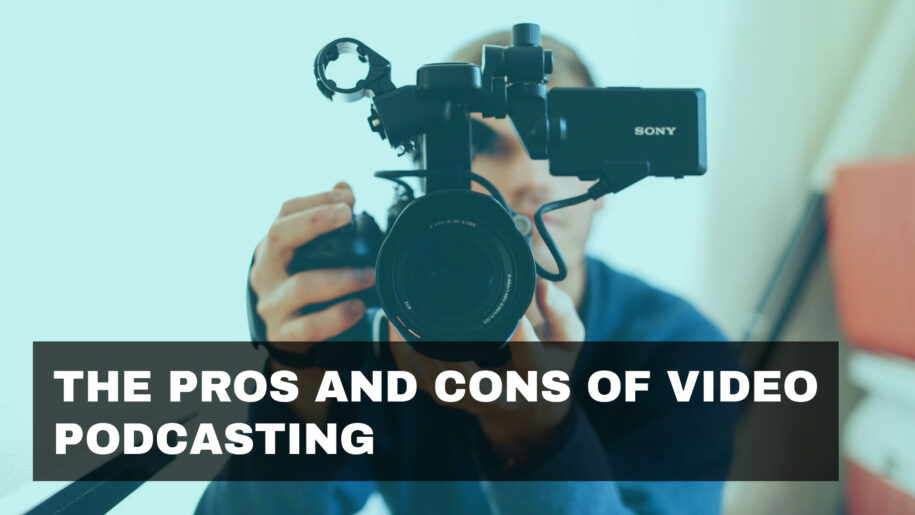Video podcasting, also known as vodcasting, has gained popularity as an engaging way to connect with audiences. While it offers unique benefits, it also comes with certain challenges. In this blog post, we’ll explore the pros and cons of video podcasting to help you decide if it’s the right format for you.
The Pros of Video Podcasting
1. Enhanced Engagement
Video podcasts can captivate audiences by combining visual and audio elements. This dual engagement helps retain viewer interest and can make your content more memorable.
Example: “Visual cues, body language, and facial expressions can convey emotions and reactions more effectively than audio alone.”
2. Increased Reach and Accessibility
Video content is highly shareable on social media platforms like YouTube, Facebook, and Instagram. This increased exposure can help you reach a broader audience and attract new listeners.
Example: “Publishing your video podcast on YouTube can attract viewers who prefer visual content, thereby expanding your reach.”
3. Brand Building
Video podcasts allow you to showcase your brand visually. You can incorporate logos, brand colors, and other visual elements that reinforce your brand identity.
Example: “A consistent visual theme across your videos can enhance brand recognition and make your content instantly recognizable.”
4. Monetization Opportunities
Video platforms offer various monetization options, such as ads, sponsorships, and viewer donations. This can provide additional revenue streams compared to audio-only podcasts.
Example: “YouTube’s Partner Program allows you to earn money through ads displayed on your videos.”
5. Repurposing Content
Video podcasts can be repurposed into shorter clips, teasers, and social media posts. This versatility allows you to maximize your content’s value and reach different audience segments.
Example: “Clip highlights from your video podcast to create engaging snippets for social media platforms.”
The Cons of Video Podcasting
1. Higher Production Costs
Producing a video podcast requires more equipment and resources, such as cameras, lighting, and video editing software. These additional costs can be a barrier for beginners.
Example: “Investing in high-quality cameras and lighting can be expensive, especially for podcasters just starting out.”
2. Increased Time and Effort
Video podcasting involves more time-consuming tasks, including setting up equipment, recording, and editing video footage. This can be challenging to manage alongside other commitments.
Example: “Editing video content is often more complex and time-consuming than editing audio alone.”
3. Technical Challenges
Video production introduces technical challenges such as lighting, camera angles, and file storage. Managing these aspects requires technical knowledge and skills.
Example: “Ensuring proper lighting and sound synchronization can be tricky and may require additional training or assistance.”
4. Viewer Distractions
Viewers might get distracted by visual elements, leading them to pay less attention to the audio content. Striking a balance between engaging visuals and maintaining focus on the message is essential.
Example: “Excessive or irrelevant visual elements can divert attention from the core content of your podcast.”
5. Accessibility Concerns
Not all listeners have the bandwidth or data plans to stream video content. This can limit your audience to those with access to high-speed internet.
Example: “Listeners in areas with limited internet access may struggle to watch video podcasts, reducing your potential audience.”
Video podcasting offers numerous advantages, such as enhanced engagement, broader reach, and brand-building opportunities. However, it also comes with higher production costs, increased time and effort, and technical challenges. By weighing the pros and cons, you can determine if video podcasting aligns with your goals and resources.
Additional Tips
- Start Small: Begin with audio podcasts and gradually incorporate video elements as you become more comfortable with the process.
- Focus on Quality: Prioritize high-quality audio and video production to maintain a professional appearance.
- Engage with Your Audience: Use comments and feedback to improve your content and connect with your viewers.
By carefully considering these factors, you can make an informed decision about whether video podcasting is the right format for you.


